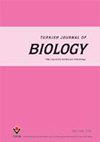敲除SET结构域,分叉1抑制头部和颈部癌症细胞的生存能力和伤口愈合能力
IF 0.9
4区 生物学
Q3 BIOLOGY
引用次数: 5
摘要
癌症是世界上第六大最常见的癌症,因此也是一个全球性的公共卫生问题。该疾病的诊断和随访没有标准的算法,目前也没有有效的治疗方法。因此,有必要发现新的生物分子并设计新的策略来帮助早期诊断,同时确定HNC的预后因素。在几项癌症研究中,SET结构域,分叉1(SETDB1)的上调已被报道为肿瘤诱导,并表明癌症的侵袭性预后,导致与不同信号通路相关的基因的调节;然而,关于SETDB1和HNC之间的关系的文献很少。在我们的研究中,使用了三种HNC原代细胞系及其相应的转移细胞系。定量逆转录聚合酶链式反应和蛋白质印迹数据表明,与原代细胞系相比,所有转移细胞系中SETDB1mRNA和蛋白质的表达水平均较高(所有细胞均P<0.05)。为了研究SETDB1在HNC生物学中的作用,使用小干扰RNA(siRNA)技术、细胞活力、划痕愈合和SETDB1基因表达的胱天蛋白酶-3活性测定进行了体外功能分析,以比较HNC的原代和转移细胞系。转移细胞更容易受到这种抑制,这降低了细胞的活力和伤口愈合能力,并诱导了胱天蛋白酶-3活性水平(均P<0.05)。这项功能研究表明SETDB1在头颈部癌变中起着重要作用。因此,SETDB1可能是一种有吸引力的治疗靶分子,也是HNC的潜在诊断和预后生物标志物。本文章由计算机程序翻译,如有差异,请以英文原文为准。
Knockdown of SET Domain, Bifurcated 1 suppresses head and neck cancer cell viability and wound-healing ability in vitro
Head and neck cancer (HNC) is the sixth most common cancer worldwide and therefore presents a global public health problem. There are no standard algorithms for the diagnosis and follow-up of the disease, and no effective current treatment approaches exist. Therefore, the discovery of new biomolecules and the design of new strategies to aid in early diagnosis is necessary, along with establishing prognostic factors of HNC. In several cancer studies, the upregulation of SET Domain, Bifurcated 1 (SETDB1) has been reported to be tumor-inducing and to indicate a cancer-invasive prognosis, leading to the modulation of genes associated with different signaling pathways; however, the literature is sparse regarding the relationship between SETDB1 and HNC. In our study, three HNC primary cell lines and their corresponding metastatic cell lines were used. The quantitative reverse transcriptase-polymerase chain reaction and western blotting data indicated that the SETDB1 mRNA and protein expression levels were higher in all metastatic cell lines compared to their primary cell lines (P < 0.05 for all). To investigate the role of SETDB1 in HNC biology, in vitro functional analyses were carried out using small interference RNA (siRNA) technology, cell viability, scratch wound-healing, and the caspase-3 activity assay of gene expression of SETDB1 to compare primary and metastatic cell lines of HNC. Metastatic cells were more susceptible to this suppression, which decreased the vitality of cells and their ability of wound-healing and induced level of caspase-3 activity (P < 0.05 for all). This functional study has shown that SETDB1 plays an important role in head and neck carcinogenesis. Therefore, SETDB1 may be an attractive therapeutic target molecule and also a potential diagnostic and prognostic biomarker in HNC.
求助全文
通过发布文献求助,成功后即可免费获取论文全文。
去求助
来源期刊

Turkish Journal of Biology
BIOLOGY-
CiteScore
4.60
自引率
0.00%
发文量
20
审稿时长
6-12 weeks
期刊介绍:
The Turkish Journal of Biology is published electronically 6 times a year by the Scientific and Technological
Research Council of Turkey (TÜBİTAK) and accepts English-language manuscripts concerning all kinds of biological
processes including biochemistry and biosynthesis, physiology and metabolism, molecular genetics, molecular biology,
genomics, proteomics, molecular farming, biotechnology/genetic transformation, nanobiotechnology, bioinformatics
and systems biology, cell and developmental biology, stem cell biology, and reproductive biology. Contribution is open
to researchers of all nationalities.
 求助内容:
求助内容: 应助结果提醒方式:
应助结果提醒方式:


